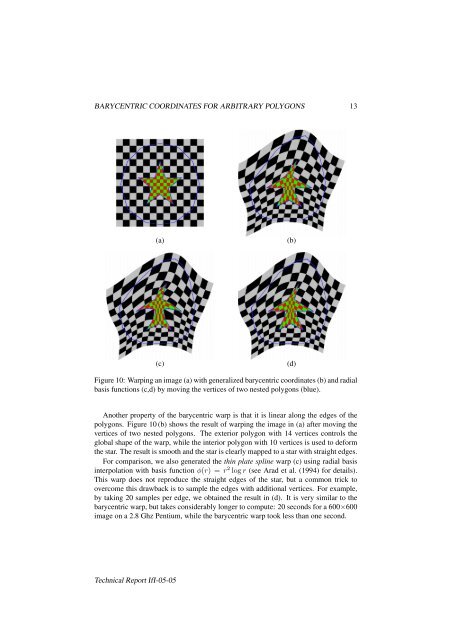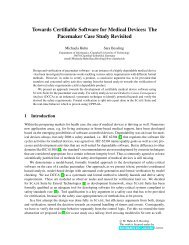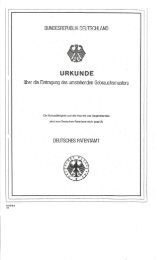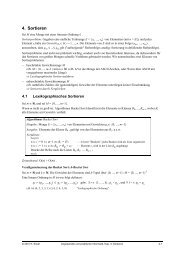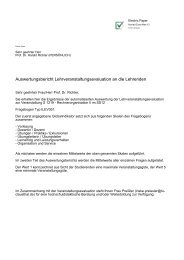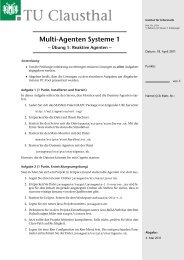Barycentric Coordinates for Arbitrary Polygons in the Plane
Barycentric Coordinates for Arbitrary Polygons in the Plane
Barycentric Coordinates for Arbitrary Polygons in the Plane
Create successful ePaper yourself
Turn your PDF publications into a flip-book with our unique Google optimized e-Paper software.
BARYCENTRIC COORDINATES FOR ARBITRARY POLYGONS 13<br />
(a)<br />
(b)<br />
(c)<br />
(d)<br />
Figure 10: Warp<strong>in</strong>g an image (a) with generalized barycentric coord<strong>in</strong>ates (b) and radial<br />
basis functions (c,d) by mov<strong>in</strong>g <strong>the</strong> vertices of two nested polygons (blue).<br />
Ano<strong>the</strong>r property of <strong>the</strong> barycentric warp is that it is l<strong>in</strong>ear along <strong>the</strong> edges of <strong>the</strong><br />
polygons. Figure 10 (b) shows <strong>the</strong> result of warp<strong>in</strong>g <strong>the</strong> image <strong>in</strong> (a) after mov<strong>in</strong>g <strong>the</strong><br />
vertices of two nested polygons. The exterior polygon with 14 vertices controls <strong>the</strong><br />
global shape of <strong>the</strong> warp, while <strong>the</strong> <strong>in</strong>terior polygon with 10 vertices is used to de<strong>for</strong>m<br />
<strong>the</strong> star. The result is smooth and <strong>the</strong> star is clearly mapped to a star with straight edges.<br />
For comparison, we also generated <strong>the</strong> th<strong>in</strong> plate spl<strong>in</strong>e warp (c) us<strong>in</strong>g radial basis<br />
<strong>in</strong>terpolation with basis function φ(r) = r 2 log r (see Arad et al. (1994) <strong>for</strong> details).<br />
This warp does not reproduce <strong>the</strong> straight edges of <strong>the</strong> star, but a common trick to<br />
overcome this drawback is to sample <strong>the</strong> edges with additional vertices. For example,<br />
by tak<strong>in</strong>g 20 samples per edge, we obta<strong>in</strong>ed <strong>the</strong> result <strong>in</strong> (d). It is very similar to <strong>the</strong><br />
barycentric warp, but takes considerably longer to compute: 20 seconds <strong>for</strong> a 600×600<br />
image on a 2.8 Ghz Pentium, while <strong>the</strong> barycentric warp took less than one second.<br />
Technical Report IfI-05-05


